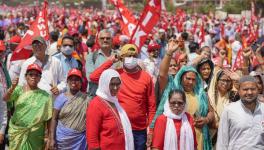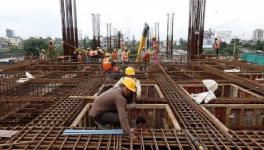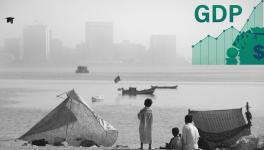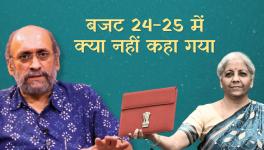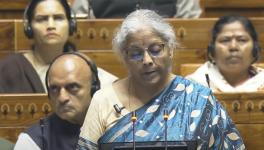Union Budget 2019-20: No Shift in Policy Direction
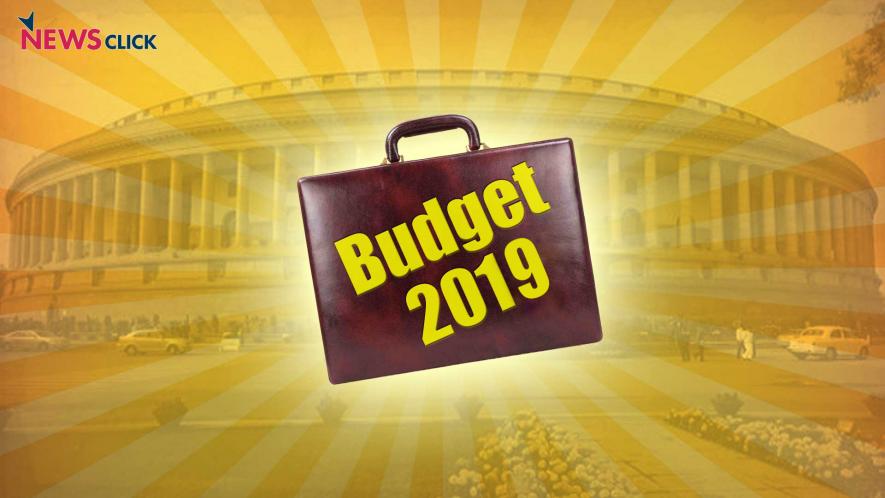
Budget is an exercise where the finance ministers propose the expected annual expenditures under different heads in advance. Also, they have to give a statement of expected revenues from various tax and non-tax sources in order to meet those expenditure needs. If the expected aggregate expenditure exceeds the expected tax and non-tax revenue receipts (the gap is called ‘fiscal deficit’) of the government, then the government has to find ways to borrow or to sell some of the existing government assets to meet that extra expenditure requirement. The finance ministers also have to propose that for the approval of Parliament. Depending on the priorities of the government and need of the economy, the expenditures under different heads are decided. Also, in order to mobilise the required revenue, the government changes tax policy and tax rates time to time. Additionally, the finance ministers use this opportunity to propose some reforms or structural changes or the changes in rules and regulations while presenting the budget. Unfortunately, this budget speech was full of those measures and less of budget for ensuring ‘minimum government with maximum governance’.
Let us see what is there in the data appendix of the budget. Since, the numbers are big and also since the prices rise every year, to scale it down and to make it comparable with the previous year, we generally normalise it by the national income or GDP (gross domestic product). If we assume the aggregate GDP of India to be Rs. 100, then what is the government expenditure and how much is the revenue receipt as compared to that and so on. The aggregate government expenditure of the central government has been proposed to be 13.2% of GDP in the current financial year 2019-20. The expected GDP (assuming 12% growth in nominal GDP) for the year 2019-20 is Rs. 211 lakh crore. Therefore, 1% of GDP means roughly Rs. 2.1 lakh crore in the current financial year. The expected tax revenue of the centre in 2019-20 is 7.8% of GDP and non-tax revenue is 1.5%. Therefore, there is a gap of around 3.9% of GDP. It has been proposed that the government will sell its assets (including the Air India) worth of Rs.1,05,000 crore (or 0.5% of GDP) this year. There would be net recoveries of some loans and advances, and the rest would be the fiscal deficit of an amount of 3.3% of GDP, which has to be borrowed either from the domestic market or from abroad.
Also read: BJP Manifesto Vs Budget: The More You Talk, The Less You Deliver
This budget was being formulated in the context of a falling rate of growth and increasing unemployment with absolute stagnation of average rural wage rates (after adjusting for the price rise). The investment rate at the aggregate level is continuously declining due to the lack of expected demand on the face of falling rate of profit. Inequality is on the rise and more than 80% population is finding it extremely difficult to bear the expenses for their children’s education and privatised healthcare services. Many people have argued that the government should enhance the capital expenditure, particularly when private investment is not rising at a good enough rate to absorb the existing labour-force. Also, it must increase the social sector expenditures substantially, particularly on health, education, employment generation and poverty reduction etc. But, the social sector expenditures remained the same (if not reduced) as proportion of GDP in this budget. And, the capital expenditure has been actually brought down from 1.7% in 2018-19 to 1.6% of GDP in 2019-20. If we deduct the expected disinvestment from this, the net capital expenditure of the central government would become merely 1% of GDP in this country.
Table: Expenditure of Major Items as Percentage of GDP
| 2017-2018 Actual | 2018-2019 Budget Estimates | 2018-2019 Revised Estimates | 2019-2020 Budget Estimates | |
|---|---|---|---|---|
| Pension | 0.85 | 0.89 | 0.88 | 0.83 |
| Defence | 1.62 | 1.5 | 1.51 | 1.45 |
| Fertiliser Subsidy | 0.39 | 0.37 | 0.37 | 0.38 |
| Food Subsidy | 0.59 | 0.9 | 0.91 | 0.87 |
| Petroleum | 0.14 | 0.13 | 0.13 | 0.18 |
| Agriculture and Allied Activities | 0.31 | 0.34 | 0.46 | 0.72 |
| Commerce and Industry | 0.14 | 0.15 | 0.15 | 0.13 |
| Development of North East | 0.01 | 0.02 | 0.01 | 0.01 |
| Education | 0.47 | 0.45 | 0.44 | 0.45 |
| Energy | 0.25 | 0.22 | 0.24 | 0.21 |
| External Affairs | 0.08 | 0.08 | 0.08 | 0.08 |
| Finance | 0.1 | 0.11 | 0.1 | 0.1 |
| Health | 0.31 | 0.29 | 0.3 | 0.31 |
| Home Affairs | 0.51 | 0.5 | 0.53 | 0.49 |
| Interest | 3.09 | 3.06 | 3.12 | 3.13 |
| IT and Telecom | 0.1 | 0.12 | 0.09 | 0.1 |
| Others | 0.39 | 0.39 | 0.4 | 0.36 |
| Planning and Statistics | 0.03 | 0.03 | 0.03 | 0.03 |
| Rural Development | 0.79 | 0.73 | 0.72 | 0.67 |
| Scientific Departments | 0.13 | 0.13 | 0.13 | 0.13 |
| Social Welfare | 0.22 | 0.23 | 0.25 | 0.24 |
| Tax Administration (TA) | 0.42 | 0.56 | 0.36 | 0.56 |
| TA of which transfer to GST Compensation Fund | 0.33 | 0.48 | 0.27 | 0.48 |
| Transfer to States | 0.63 | 0.76 | 0.75 | 0.74 |
| Transport | 0.65 | 0.71 | 0.77 | 0.75 |
| Union Territories | 0.08 | 0.07 | 0.08 | 0.07 |
| Urban Development | 0.23 | 0.22 | 0.23 | 0.23 |
Source: Budget Document 2019-20. Downloadable from https://www.indiabudget.gov.in/
From the above table, it is evident that the significant increase has happened only in the expenditure (as proportion of GDP) on agriculture and allied activities. Expenditure on rural development (including Mahatma Gandhi National Rural Employment Guarantee Scheme) has actually been reduced as percentage of GDP. Defence expenditure is lower, expenditure on pension is lower (despite the announcement that the shopkeepers would also get pension), expenditure on energy is lower and so on (see the table). Other expenditures remained more or less stagnated as proportion of GDP. Expenditure on education has come down as compared to the actual spending in 2017-18. Government expenditure on health in India is one of the lowest in the whole world – this was also not raised as percentage of GDP.
In order to enhance capital expenditure (net of disinvestment) and the social sector expenditures substantially, the government has to increase the revenue receipts. Otherwise, the fiscal deficit to GDP ratio would go up, which would not be liked by the international rating agencies. Our tax-GDP ratio is one of the lowest in the whole world. The tax-GDP ratio of the centre, instead of rising, as proportion of GDP, has actually come down in this budget as compared to the last year (i.e. 2018-19). This has happened primarily because of lower expected revenue from the income tax and that from the GST. Tax-GDP ratio is expected to come down even after putting Rs. 2 per litre extra tax on petrol and diesel, on top of already very high tax on the petroleum products. Because of some expected increase in the non-tax revenue, particularly in dividends and profits, the total revenue receipt as proportion of GDP has not come down. However, it could not increase substantially to create enough fiscal space for 3% of GDP amount of health expenditure, 6% of GDP amount of education expenditure and at least 5% of GDP amount of capital expenditure of the combined (centre plus states) government without cutting down other spending.
Also watch: Union Budget: Who Gains, Who Loses?
Until and unless that happens, achhe din (read welfare state) would remain a distant dream. In order to materialise that, we need to increase the combined tax-GDP ratio from 16-17% of GDP to the tune of 24-25% of GDP in this country. Our tax rates (both direct and indirect) are not low as compared to the international standard. We do not have wealth tax or property inheritance tax (for the super rich people) in this country. Our tax base is low because of the fact that majority of the population is very poor in India. However, many poorer countries have much higher tax-GDP ratio than us. Given the tax rates and tax base, it is perfectly possible to increase the tax-GDP ratio substantially. What we require is the ‘political will’ for it in this largest democracy of the world.
Get the latest reports & analysis with people's perspective on Protests, movements & deep analytical videos, discussions of the current affairs in your Telegram app. Subscribe to NewsClick's Telegram channel & get Real-Time updates on stories, as they get published on our website.













